Tag: ventilator
Mechanical Power Impact Normalized to Predicted Body Weight on Outcomes in Pediatric ARDS
Higher mechanical power (MP) was associated with fewer ventilator (VFD) and ICU free days (IFD). The causal effect of MP on VFD and IFD was fully mediated by the impairment in oxygenation. This is a post-hoc analysis of... read more
Ventilator Management: A Pre-Hospital Perspective
The goal of this book is to provide the most up to date information on mechanical ventilation based on current research, evidence based practice and my experiences as a flight paramedic and educator. A comprehensive look... read more

Monitoring Mechanical Ventilation Using Ventilator Waveforms
This book discusses the interpretation of mechanical ventilator waveforms. Each page shows a screenshot from a real patient and explains one or two messages. It starts with basic information about the waveforms and goes... read more
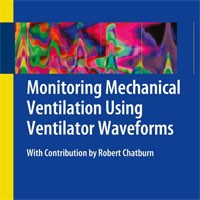
Ventilation Practices in ABI Patients and Association with Outcomes
Current mechanical ventilation practices for patients with acute brain injury (ABI) are poorly defined. This study aimed to describe ventilator settings/parameters used in intensive care units (ICUs) and evaluate their association... read more
Oral Health Care and VAP in ICU Patients
Both Zataria Multiflora (ZM) and Chlorhexidine (CHG) and CHG alone reduce ventilator-associated pneumonia (VAP) incidence and improve the oral health status of mechanically ventilated patients. However, the combination of... read more
Electrical Impedance Tomography for PEEP Titration in ARDS Patients
ARDS patients may benefit from electrical impedance tomography (EIT)-guided positive end-expiratory pressure (PEEP) titration. The real-time bedside assessment of regional ventilation provided by EIT may result in improved... read more
Intubate Patients with Sepsis Before Midnight or When the Time Comes?
The ever-recurring decision for every clinician is to act or not to act and when to act. The balance of benefit or harm of an intervention and the optimal timing of treatment is not always clear. Intervening or not and... read more
Ventilator-associated Lung Disease: A Complex Reality in the ICU
Mechanical ventilation, by tracheal intubation or tracheostomy, is the common supplementary treatment for several reasons for hospitalization. Since the advent of long-term mechanical ventilation during the polio epidemic. In... read more
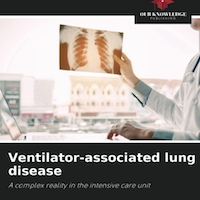
Noninvasive Mechanical Ventilation: Theory, Equipment, and Clinical Applications
The new edition presents updates regarding new clinical applications of noninvasive mechanical ventilation and discusses recent technical advances in this field. The opening sections are devoted to theory, equipment, with... read more
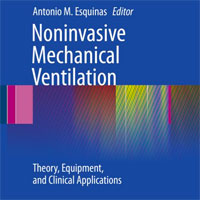
Implementing a Bedside Percutaneous Tracheostomy and Ultrasound Gastrostomy Team Reduces Length of Stay and Hospital Costs
Thousands of critically ill patients every year in the United States receive tracheostomy and gastrostomy procedures. Recent research has investigated the benefits of a combined team approach to these procedures, with associated... read more
Predictors of Weaning Failure in Ventilated ICU Patients
Predictors for weaning failure are widely researched. To date, 145 predictors have been investigated with varying intensity in 140 studies that are in line with the current weaning definition. It is no longer just individual... read more
The Pathophysiology of Happy Hypoxemia in COVID-19
The novel coronavirus disease 2019 (COVID-19) pandemic is a global crisis, challenging healthcare systems worldwide. Many patients present with a remarkable disconnect in rest between profound hypoxemia yet without proportional... read more
Conservative or Liberal Oxygen Targets in Patients on VA-ECMO
In adults receiving VA-ECMO in the ICU, a conservative compared to a liberal oxygen strategy did not affect the number of ICU-free days to day 28, nor any other measurable patient outcomes up to 6 months after ICU admission.... read more
Pitfalls in the Management of Mechanical Ventilation: ARDS and Hypermetabolic States
Mechanical Ventilation (MV) is an invaluable, lifesaving therapy for patients with acute respiratory failure, but it must be individualized for each specific underlying physiologic derangement to maximize benefits and minimize... read more
Early Ketamine Sedation Outcomes Among Mechanically Ventilated COVID-19 Patients
In a diverse sample of U.S. hospitals, about one in 30 patients mechanically ventilated with COVID-19 received ketamine infusions. Early ketamine may have an association with higher hospital mortality, increased total cost,... read more
Mechanical Ventilation in Emergency Medicine
This book discusses mechanical ventilation in emergency settings, covering the management of patients from the time of intubation until transfer to the ICU. It provides an introduction to key concepts of physiology pertinent... read more
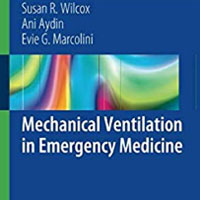
Pros and Cons of Disconnecting the Ventilator During Acute Respiratory Decompensation
Disconnecting the ventilator and manual BMV should be performed in cases where device malfunction is the primary cause of decompensation. These instances are quite rare. Disadvantages of switching to BMV include loss of... read more
Mechanical Ventilation for the ICU Resident: A Concept Based Approach
This book is written primarily with the intent of helping medical residents understand the basics of mechanical ventilation. It is meant to be read during a one-month rotation in the ICU. It is a compilation of concepts... read more
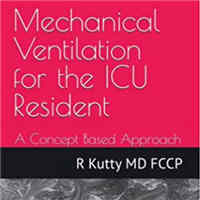
Clinical Application of Mechanical Ventilation
Fundamental concepts of respiratory physiology and the day-to-day duties of a respiratory care professional. Utilizing the wide degree of topics covered, including airway management, understanding ventilator waveforms,... read more
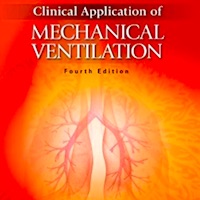
New WHO Toolkit Focuses on Severe Acute Respiratory Infection
During the early months of the pandemic, it became imperative to share best practices for the care and treatment of patients with SARS CoV-2. This new infectious agent, with potentially new pathogenesis and an unprecedented... read more
Fluid Balance and Ventilator-Associated Events Among Patients Admitted to ICUs in China
There was nonlinear relationship between fluid balance and all three tiers of ventilator-associated event, with an fluid balance between –1 and 0 L corresponding to the lowest risk. Positive but not negative fluid balance... read more
Facemask vs. Helmet – Noninvasive Ventilation
We use Noninvasive ventilation (NIV) to treat various disease processes, such as acute hypercapnic and hypoxemic respiratory failure, post-extubation failure, and neuromuscular diseases. Data supports NIV use in some conditions,... read more









